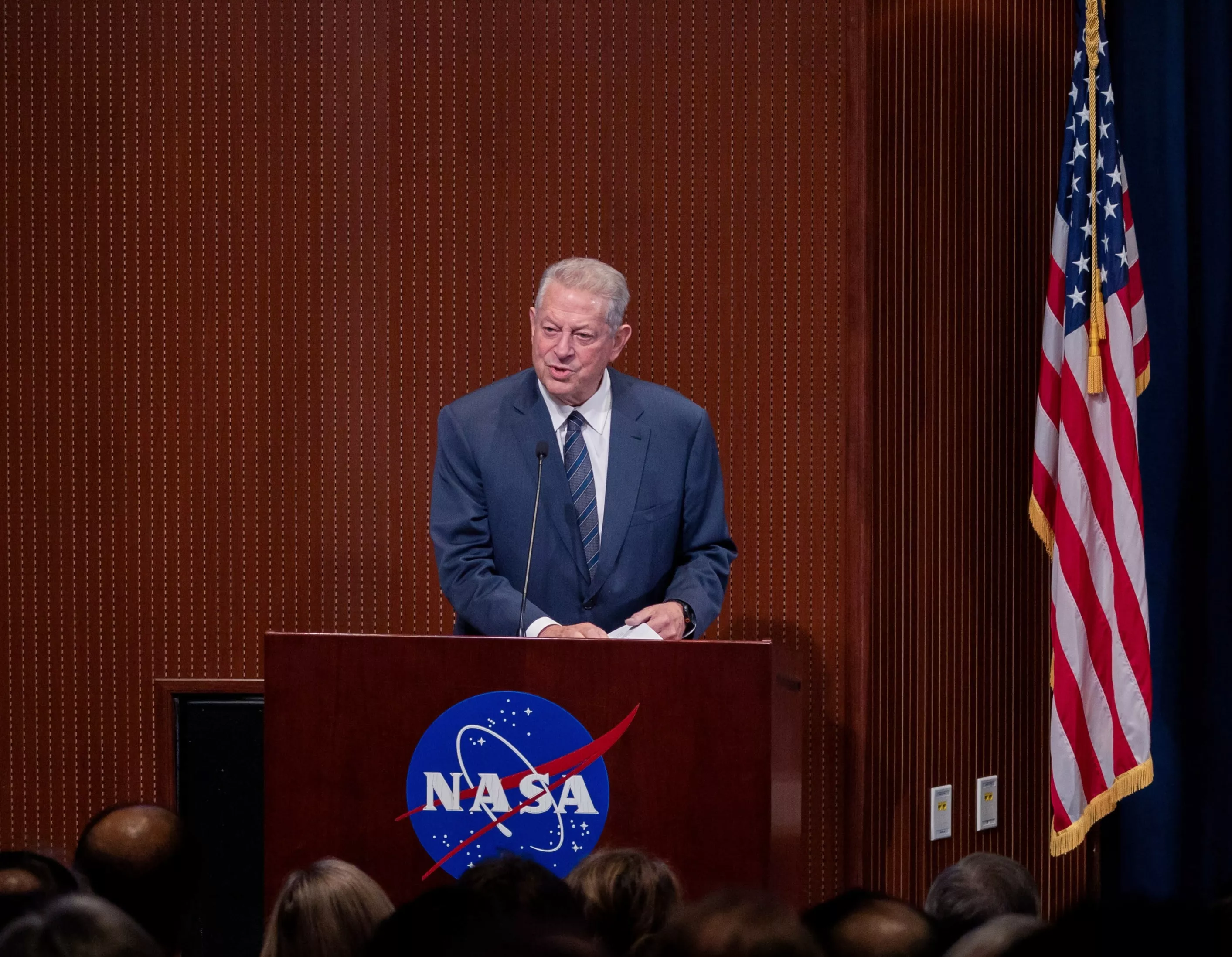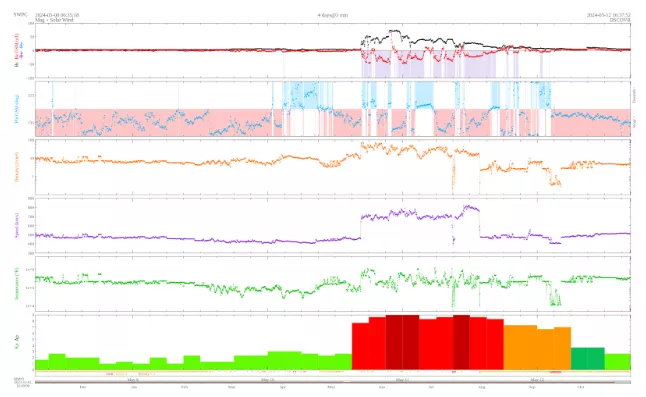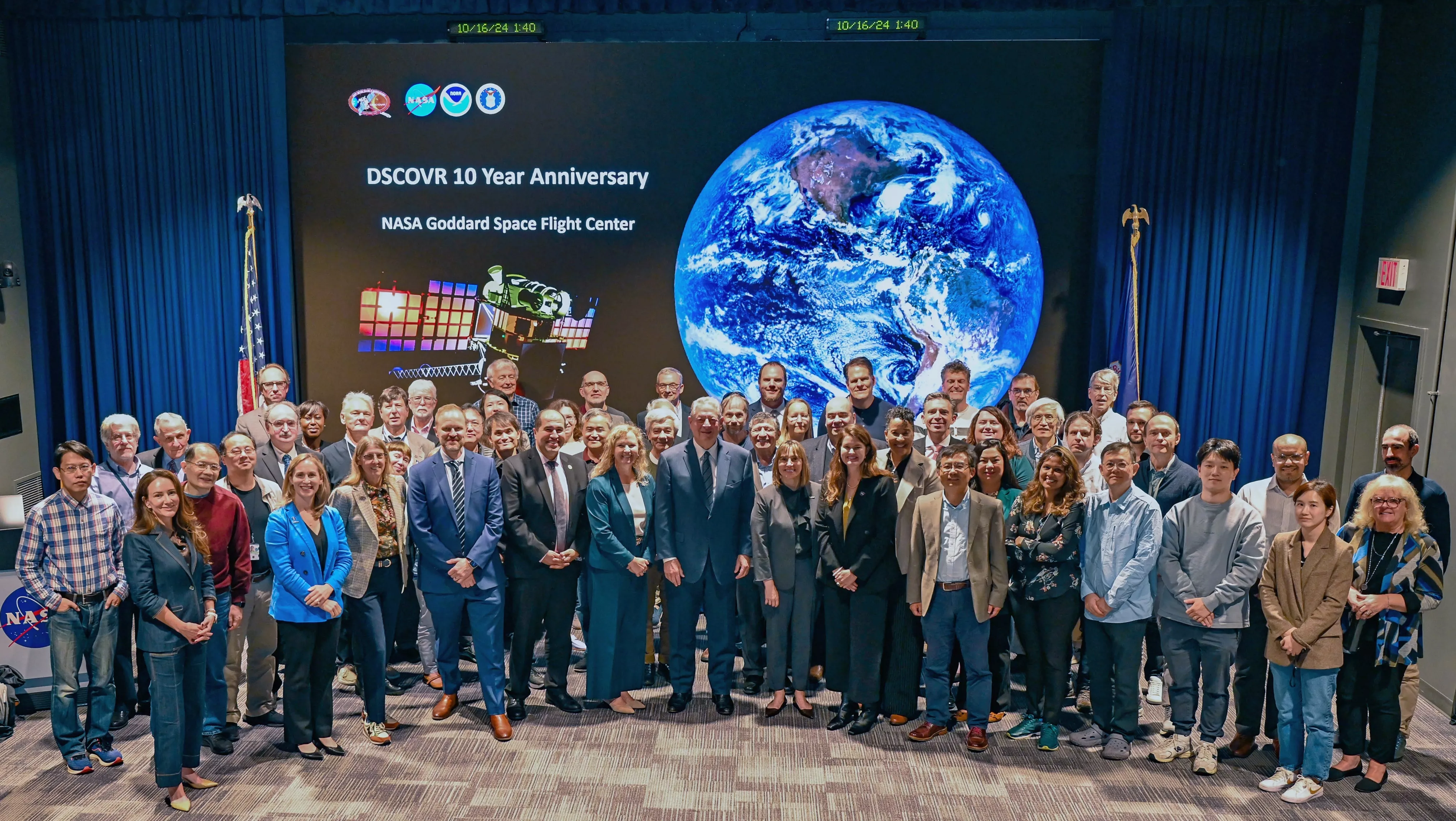On Oct. 16, 2024, NASA’s Goddard Space Flight Center in Greenbelt, Maryland celebrated an early 10 year anniversary of NOAA’s Deep Space Climate Observatory (DSCOVR).
Former Vice President Al Gore, who conceived the mission (originally named Triana) during his vice presidency and who was in attendance for DSCOVR’s joint NOAA–U.S. Air Force launch on Feb. 11, 2015, returned to commemorate this significant milestone. Over the past decade, DSCOVR has played a critical role in safeguarding vital infrastructure through its real-time solar wind monitoring capabilities.

Former Vice President Al Gore speaks at NASA's Goddard Space Flight Center about NOAA’s Deep Space Climate Observatory (DSCOVR).
Stationed at the L1 Lagrange point, a neutral gravity position about one million miles away, between the Earth and the sun, DSCOVR aids NOAA in the ability to issue timely and accurate space weather alerts and forecasts. These warnings are crucial for safeguarding systems like power grids, telecommunications, aviation, and GPS navigation from the disruptive effects of geomagnetic storms and other space weather events.

The imagery above shows data before and during the severe geomagnetic storm on May 10, 2024, showing the Coronal Mass Ejection shock front hitting DSCOVR. The strong interplanetary magnetic field (black line in the top plot) which was mostly oriented downward toward the Earth (red line in the top plot) which caused coupling with the Earth's magnetic field (dark red bars in the bottom plot), maximizing the impact on the power grid, GPS systems and spacecraft in Earth orbit. The solar wind speed (purple line in the third plot from the bottom) almost doubled in a period of less than 20 seconds, to a speed of over 1.5 million MPH. This storm reached G5 on the NOAA G Scale (G1-G5) and was the strongest geomagnetic storm in 21 years.
At the event, Al Gore met with the DSCOVR science team in which Dr. Elsayed Talaat, NOAA’s Director of Space Weather Observations, briefed the former Vice President about NOAA’s plans at L1 with the upcoming launch of NOAA’s Space Weather Follow On (SWFO)-L1 observatory and the Space Weather Next L1 series.
Reflecting on DSCOVR’s impact, Dr. Talaat emphasized the mission’s importance. "Measurements from DSCOVR have been absolutely critical in helping protect our technological infrastructure from severe space weather events,” he said. “We now understand how important this 'upstream buoy' vantage point is for NOAA's operational capability and we are implementing a series of spacecraft that will continue these observations beyond the next decade."

A group photo with the DSCOVR anniversary Science team, which includes former Vice President Al Gore and NOAA's Dr. Elsayed Talaat.
NOAA’s upcoming SWFO-L1 mission, scheduled for launch in 2025, will build on DSCOVR’s legacy, continuing NOAA’s critical work of protecting advanced technological systems and national security from space weather hazards.
